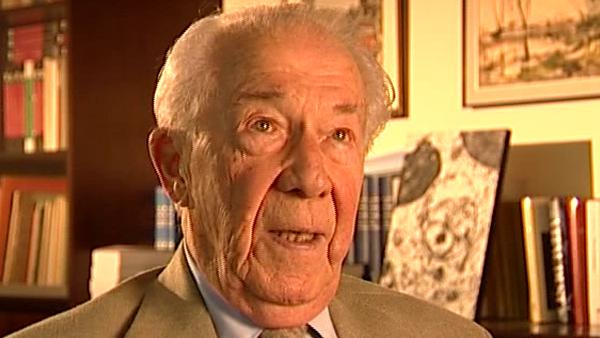NEXT STORY

The International Institute of Cellular and Molecular Pathology
RELATED STORIES

NEXT STORY

The International Institute of Cellular and Molecular Pathology
RELATED STORIES


|
Views | Duration | |
|---|---|---|---|
| 61. Learning I'd won the Nobel Prize | 241 | 03:41 | |
| 62. The 'fallout' of winning the Nobel Prize | 261 | 05:58 | |
| 63. The purpose of science | 275 | 03:28 | |
| 64. The importance of pure research | 153 | 03:15 | |
| 65. The division of the Catholic University of Louvain | 118 | 03:55 | |
| 66. Louvain-la-Neuve | 98 | 02:45 | |
| 67. The International Institute of Cellular and Molecular Pathology | 127 | 04:46 | |
| 68. Collaboration within the ICP | 84 | 03:29 | |
| 69. Expanding and funding the ICP | 67 | 03:40 | |
| 70. Thierry Boon and the Ludwig Institute for Cancer Research | 134 | 05:35 |


As a result of this splitting, a brand new university town was built very near the old city of Louvain but on French-speaking soil if I can use that expression, and that became Louvain-la-Neuve, New Louvain; this was actually a town and gown situation that was built simultaneously and remains a rather... it's not very... maybe not very pretty, but remains an interesting creation. It's a big city now. But the medical faculty... the medical school was not moved to Louvain-la-Neuve but was moved to the outskirts of Brussels – a borough called Woluwe-Saint-Lambert – and they built a brand new hospital and all the buildings of the medical school there because they needed... a big university hospital cannot work without a large supply of patients, so we need a large city to supply its patients to the hospital. Except for that it's rather sad that the medical school should be separate from the rest of the university because I feel very strongly that we should all be members of the same academic community, but it doesn't happen to be so. But this move of the medical school from the city of Louvain to Woluwe-Saint-Lambert allowed a project to be... to be formulated that would have been impossible before. The project was to bring together, inside a single building, laboratories that, in Louvain, were completely separated geographically from each other and had little contact with each other – put them together so that they could, together, provide a critical mass of competences, of expertise, of instrumentation, of techniques so that they could tackle, together, some of the major problems of medicine that could not be attacked singly by any one of them.
Belgian biochemist Christian de Duve (1917-2013) was best known for his work on understanding and categorising subcellular organelles. He won the Nobel Prize in Physiology or Medicine in 1974 for his joint discovery of lysosomes, the subcellular organelles that digest macromolecules and deal with ingested bacteria.
Title: Louvain-la-Neuve
Listeners: Peter Newmark
Peter Newmark has recently retired as Editorial Director of BioMed Central Ltd, the Open Access journal publisher. He obtained a D. Phil. from Oxford University and was originally a research biochemist at St Bartholomew's Hospital Medical School in London, but left research to become Biology Editor and then Deputy Editor of the journal Nature. He then became Managing Director of Current Biology Ltd, where he started a series of Current Opinion journals, and was founding Editor of the journal Current Biology. Subsequently he was Editorial Director for Elsevier Science London, before joining BioMed Central Ltd.
Tags: Louvain, Louvain-la-Neuve, Woluwe-Saint-Lambert
Duration: 2 minutes, 45 seconds
Date story recorded: September 2005
Date story went live: 24 January 2008